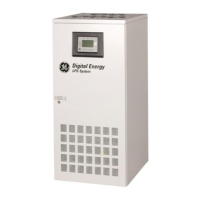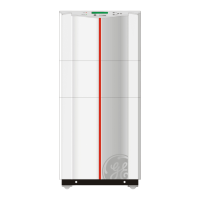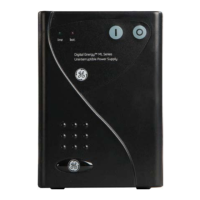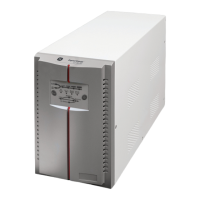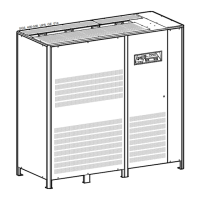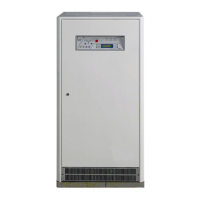OPM_LPS_33E_10K_30K_4CN_V010.doc 26/82 Operating Manual LP 33 / 10-20-30 kVA
4.7 CABLING
WARNING !
The connections to and from the UPS must be executed by QUALIFIED
PERSONNEL ONLY.
Refer to the “Safety prescriptions - Installation” described on page 7.
The cabling of the UPS-system has to be done according to the power installed.
Exceptions are only allowed to suit local prescriptions.
For correct rating of fuses and cable sections for input mains, output load and battery, see data
indicated in sections 4.7.2 and 4.7.3.
Before connecting the UPS, verify that the mains voltage and frequency, the output load voltage,
the frequency and the battery data (cells number, floating voltage, autonomy) are according to the
local requirements.
Caution when using four-pole circuit breakers as protection.
A potential problem exists for situations with non-linear loads: the neutral current could be
greater than the phase currents.
Avoid to run the input cables in parallel with the output cables to prevent them from noise
induction.
Mains Input
Load
Fig. 4.7-1 RPA Parallel System
In order to ensure a correct load sharing between
the parallel units, when the load is supplied by
mains, it is recommended to keep the cable size
and length from the input distribution board to the
output busbar the same for each parallel unit.
Mains Bypass input voltage must be the same for
all units, thus avoiding phase shift or phase
rotation problems.
To avoid mutual induction effect, the input cables
bust be run in separate conduit from the output
cables.
No transformers, fuses or automatic circuit breakers should be
inserted between the unit’s output and the load common busbars.
The delivery and installation of fuses and input / output connections of the UPS are at the
customer’s expense, unless agreed otherwise.
NOTE !
In case of non observance of the required minimum distances on both UPS
sides (see section 4.4) it is recommended to provide an additional length of
the input/output cables so that the UPS can be moved for maintenance
purpose.
It is recommended to use flexible input/output conductors with suitable length
to admit a sufficient displacement.

